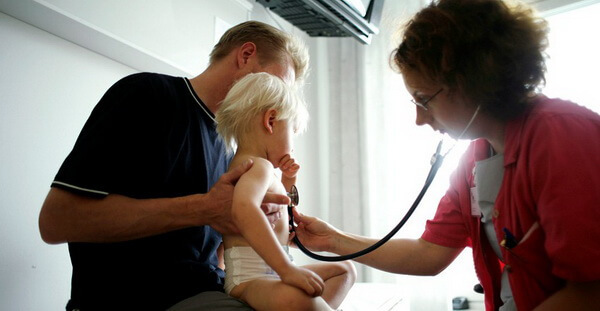Hypertension and its treatment with leeches
 Hypertension is a disease characterized by high blood pressure. With hypertension, the lumen of the arteries narrows, which makes it difficult to move blood through the blood vessels. The walls of the vessels experience high blood pressure. Usually hypertension usually occurs in people who have already reached the age of forty. Women are more often affected by this disease. In this case, hypertension is not a consequence of disruption of the work of any organs or systems of the body.
Hypertension is a disease characterized by high blood pressure. With hypertension, the lumen of the arteries narrows, which makes it difficult to move blood through the blood vessels. The walls of the vessels experience high blood pressure. Usually hypertension usually occurs in people who have already reached the age of forty. Women are more often affected by this disease. In this case, hypertension is not a consequence of disruption of the work of any organs or systems of the body.
Hypertension refers to a group of cardiovascular diseases, it is manifested by increased heart rate, heart rhythm disturbance, unpleasant sensations in the heart, shortness of breath and other symptoms.
It is difficult to determine what pressure is considered normal, because this indicator is a purely individual value, because people have different body structures.
It is difficult to determine which pressure indicators are considered abnormal. There are no clear indicators on which to orient. The increased pressure is considered to be a pressure of more than 140 per 90 mm Hg. However, the final diagnosis can be made only after receiving the results of the medical examination individually in each specific case.
For the reference point, as a rule, take the pressure of a particular patient, under which he feels most comfortable. The first figure of the pressure index is the pressure in the arteries during when the heart muscle contraction occurs, the second is the pressure at the time of heart relaxation in the period between the two contractions.
Patients with blood pressure values up to 160 per 90 mm Hg. Art. Bring in a group of risk, and those who have even higher blood pressure are considered to be hypertensive.
Frequent high blood pressure in 90 percent of cases is a sign of hypertensive disease. If they are higher, doctors tend to define as hypertension symptomatic, hypertension, which is a consequence of a violation, for example, renal circulation or other disorders.
The exact causes of hypertension are not clear. Scientific research has shown that most often this disease develops due to constant nervous overstrain or once suffered severe psychological trauma.
It has also been scientifically proven that hypertension can have a genetic predisposition, that is, it can be inherited. So native hypertensive patients often suffer from headaches due to high blood pressure. Moreover, the causes of hypertension can be a wrong way of life, improper nutrition, inability to overcome stressful situations, smoking, age factor, disruption of endocrine glands, liver, kidneys and other internal organs, chronic lack of sleep, immense consumption of table salt.
People who suffer from hypertension are much more at risk of having a stroke or heart attack. The age factor is manifested in the fact that the majority of people aged between sixty and sixty-five years observe the thickening of the walls of blood vessels, the narrowing of the lumen, which is fraught with the emergence of primary hypertension.
Both forms of hypertension can occur with increasing blood viscosity. Most often this is manifested with malnutrition.
Three stages can be traced in the development of hypertension. The first stage is characterized by an increase in blood pressure in the case of severe excitement or nervous overexertion, after which it normalizes independently. No changes in internal organs and systems are observed.
If hypertension has reached the second stage, then the increase in blood pressure is observed more often and keeps, not decreasing, until the patient takes special medications. In the internal organs there are changes - the left ventricle of the heart increases.
The third stage of this disease is characterized by stably high arterial pressure and a number of complications associated with it, namely, cerebral circulation disorders, frequent headaches, heart failure, sometimes even kidney failure, myocardial infarction.
People with high blood pressure often suffer from arterial pressure, whose work is associated with responsibility and increased attention.
Headache is the leading symptom of hypertension in the first stage of its development. Most often the patient feels it in the morning, localizes on the occipital region. The patient experiences a feeling of heaviness in the head, is excessively irritable, sleeps poorly, his working capacity decreases and memory worsens. Over time, often there are pain in the heart, shortness of breath with fast walking and other physical exertion, in some cases, serious deterioration of vision occurs.
Patient at any stage of hypertension should avoid fatigue, unrest, observe the regime of the day, get enough sleep, do not smoke, do not abuse alcohol. Breaking these recommendations, the patient risks becoming prone to hypertensive crisis, increasing blood pressure, accompanied by exacerbation of symptoms of the disease.
Treatment of hypertension with leeches
Scientists have studied in detail the effect of leeches on the body of patients with hypertension. The results of the studies were positive. In the process of work, the main conditions, forms of hypertension were singled out, when it is necessary to bleed with leeches. The use of leeches is recommended in cortico-vegetative, that is, sclerotic form of hypertension, with cerebrosclerosis and sclerotic, that is, total cachexia. In cases of cerebrosclerosis, general cachexia, the use of hirudotherapy is strongly recommended by doctors.
Methods hirudotherapy prevent the ailment that develops against the background of hypertension. The therapeutic effect is achieved due to the fact that the hemorrhage closes the onset of the pathological condition. The most frequent planting of leeches is recommended in the case of the sclerotic form of hypertension and the conditions close to it.
Effective treatment with leeches of many complications of hypertensive disease, including increasing heart failure. There is a case where the use of leeches led to the onset of a significant improvement in the condition of the patient who was in the state of the pre-stroke.
Leeches in the treatment of hypertension must be planted behind the ears in the places where the mastoid processes are located. It is necessary to put leeches from both sides of the head, while sitting on two or four individuals for each ear.
Leeches are planted on an imaginary line that extends one centimeter from the auricle toward the scalp. Closer than a centimeter from the ear, leeches are not planted, because there are superficial veins that the leech can easily damage with its teeth. Plant leeches in the direction from the bottom up, because the point of planting the lowest leech is most easily detected, since it is one centimeter above the level of the earlobe.
All the following leeches are planted, not deviating from the intended vertical straight line at a distance of 1-1.5 centimeters from each other. Also it is recommended in this case to plant leeches on the coccyx, near the anal opening.
Stay healthy!



